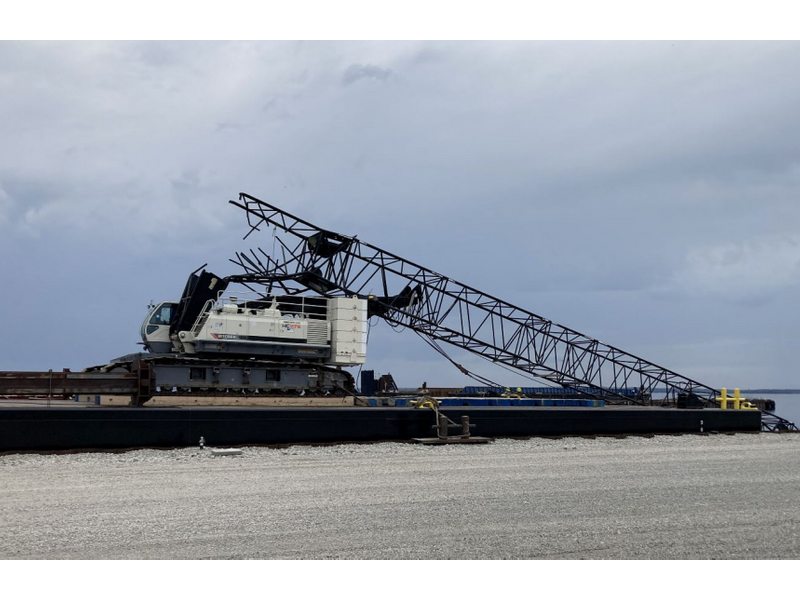Visual Estimate of Height Led to Crane Hitting Bridge
A captain and barge company managers not identifying the crane they were towing was too high to pass under the Mackinac Bridge near Mackinaw City, Michigan, led to the crane hitting the bridge, the US National Transportation Safety Board (NTSB) has concluded.
On May 7, 2023, the towing vessel Nickelena was transiting the Straits of Mackinac, while towing a deck barge transporting a crawler crane, when the crane boom struck the main span of the Mackinac Bridge. The contact bent the crane boom backwards, causing the boom to eventually collapse onto the aft end of the barge.

No injuries or pollution were reported. Damage to the Mackinac Bridge was estimated at $145,000 and damage to the crane was estimated at $665,000.
The Nickelena was transporting a crawler crane with a 160-foot-long boom and a 5-foot “rooster” sheave attachment on the deck barge to a construction project at Sault Ste. Marie, Michigan.
Before departure, managers from the towing vessel operating company visually estimated the angle of the boom to be between 50° and 60°. Using their visual estimation of the crane’s boom angle and an estimate of the crane’s boom length, both of which were incorrect, they believed that the boom was at a safe height for the transit.
Investigators determined that the actual boom angle was about 62°, corresponding to a boom height of about 162 feet above the water. Given the vertical clearance was 153 feet at the time of the contact, the crane was about 10 feet too high to transit under the bridge.
Towing vessel operations are required to have a towing safety management system, or TSMS, which is a formal, documented system for owners and operators to ensure that rules and procedures related to safe operations are in place. Voyage planning would have been included in a TSMS.
The vessel owners, Basic Towing Inc., told investigators that they had a TSMS. However, there was no documentation that a navigation assessment was conducted before departure, and the captain took no additional actions to verify the tow was safe to transit the intended route after the towing company managers told him the tow was ready to go.
“For vessels and tows with high air drafts, such as crane barges, bridges pose a risk of overhead contact,” the NTSB report said. “Operators should ensure they have the most accurate and objective data about the crane and bridge heights before getting underway. Appropriate navigational resources such as the US Coast Pilot or navigational charts should be consulted by owners and operators when developing voyage plans to assess navigation risks and hazards, including the air draft relative to bridge vertical clearances along the intended route.”
